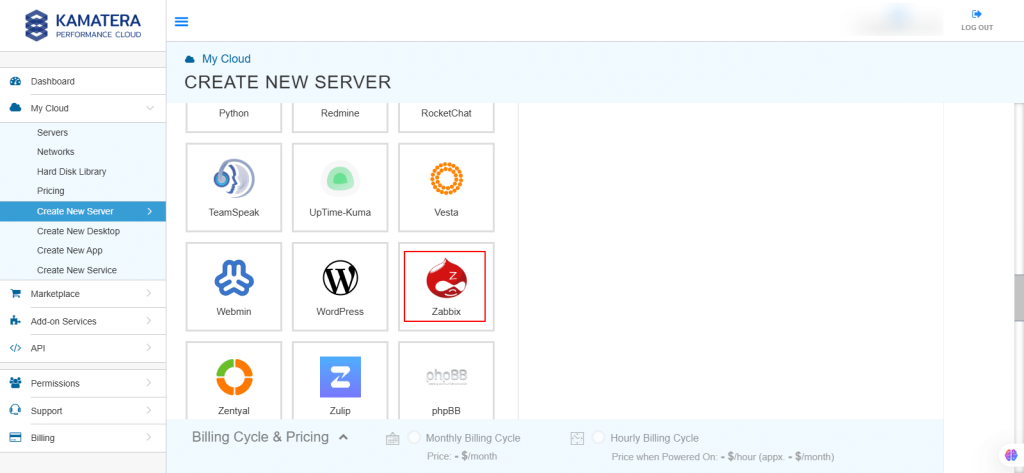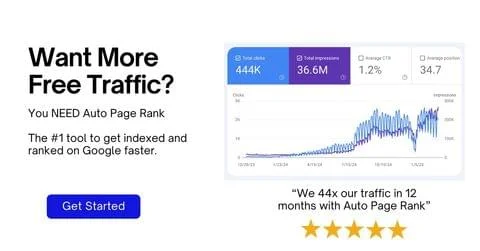Choosing the right hosting service can feel overwhelming, especially when you’re deciding between Kamatera and Hostinger. You want a provider that fits your needs without breaking the bank or causing headaches later.
What if you could find a clear answer that saves you time and money? You’ll discover the key differences that matter most to you. By the end, you’ll know exactly which option suits your website and goals. Ready to make the smartest choice?
Keep reading.

Credit: autopagerank.com
Kamatera Cloud Hosting Features
Kamatera Cloud Hosting offers a strong set of features for businesses and developers. It focuses on flexibility, speed, and security. Users can customize their server settings to match their specific needs. This makes it easy to handle different types of websites or apps.
Each feature works together to ensure smooth and reliable hosting. The platform supports growth and protects data effectively. Users also get help from a dedicated support team. These features make Kamatera a solid choice for cloud hosting.
Scalability And Performance
Kamatera allows quick upgrades of resources like CPU, RAM, and storage. This helps websites handle more visitors without slowing down. The servers use the latest technology for fast response times. Users can scale their services up or down instantly. This flexibility supports changing business needs and traffic spikes.
Global Data Center Network
Kamatera has data centers in many countries worldwide. This wide network helps deliver content closer to users. It reduces loading times and improves user experience. Customers can choose the nearest data center for their server. This also adds reliability by offering backup locations.
Security Measures
Kamatera uses strong security protocols to keep data safe. Firewalls protect servers from unauthorized access. Data is backed up regularly to prevent loss. The platform also supports SSL certificates for encrypted connections. These steps help maintain privacy and protect websites from attacks.
Customer Support
Kamatera provides 24/7 customer support through multiple channels. Users can reach experts by phone, chat, or email. The support team helps with technical issues and setup questions. Fast and helpful responses make it easier to manage hosting. This support adds confidence for users of all skill levels.

Credit: www.bluehost.com
Hostinger Cloud Hosting Features
Hostinger offers cloud hosting with solid features that suit small to medium websites. It combines power and simplicity, making it easy for beginners and pros to manage their sites. The platform focuses on speed, security, and helpful support, which makes it a popular choice.
Let’s explore some key features of Hostinger’s cloud hosting.
Speed And Uptime
Hostinger uses LiteSpeed web servers that boost website loading times. Fast loading keeps visitors happy and lowers bounce rates. The cloud setup also spreads resources to prevent slowdowns. Hostinger guarantees 99.9% uptime, meaning websites stay online almost all the time.
User-friendly Interface
The control panel is clean and easy to use. It helps users manage domains, files, and databases smoothly. Beginners can set up websites quickly without technical struggles. The dashboard also shows useful stats like traffic and resource usage clearly.
Security Protocols
Hostinger applies strong security rules to protect websites. It includes daily backups to save data safely. SSL certificates come free, securing visitors’ information. The system also blocks harmful attacks and monitors sites for threats.
Support Options
Hostinger provides 24/7 customer support through live chat. The support team responds fast and solves problems clearly. Users also find helpful guides and tutorials on the website. This support makes managing cloud hosting less stressful for everyone.
Pricing Comparison
Pricing is a key factor for anyone choosing between Kamatera and Hostinger. Both offer cloud hosting but with different pricing methods. This section breaks down their prices, helping you see which option fits your budget best.
Pricing Plans And Tiers
Kamatera uses a pay-as-you-go model. You only pay for what you use. This gives flexibility to scale resources up or down anytime. Plans start with a basic server and increase with more power and memory.
Hostinger offers fixed monthly plans. These come in several tiers with clear limits on resources like CPU, RAM, and storage. Prices are low for entry-level plans but go up for higher tiers with more features.
Value For Money
Kamatera’s pricing suits users needing custom setups. You pay exactly for your server size. This helps avoid overspending on unused resources. It is good for businesses with changing needs.
Hostinger’s fixed plans provide good value for beginners. They include extra features like free domains and SSL certificates. This makes them attractive for simple websites or blogs on a budget.
Billing Flexibility
Kamatera bills hourly, which means you can start or stop services anytime. This suits short-term projects or tests. You never pay for idle time.
Hostinger uses monthly or yearly billing cycles. Annual plans offer discounts but require upfront payment. This works well for users who want stable, long-term hosting.

Credit: www.kamatera.com
Ease Of Use
Ease of use is a key factor when choosing a hosting provider. It affects how fast you set up and manage your website. Both Kamatera and Hostinger offer tools to simplify tasks. Their user interfaces and controls differ in style and complexity. This section compares their ease of use through control panel experience, setup and deployment, and management tools.
Control Panel Experience
Hostinger uses a custom control panel that is clean and simple. Its layout helps beginners find features quickly. Icons and menus are clearly labeled. Kamatera offers a more technical control panel. It suits users with some cloud experience. The interface includes detailed options but can feel complex. Hostinger’s panel is better for users wanting a quick start.
Setup And Deployment
Hostinger provides fast setup with guided steps. Users can launch websites or apps in minutes. Templates and one-click installs speed up the process. Kamatera requires more manual setup. It allows full control over server configurations. This can be good for experts but slower for beginners. Hostinger leads in ease of setup for most users.
Management Tools
Hostinger includes built-in tools for backups, security, and performance checks. These tools are easy to access and use. Kamatera offers powerful management features too. They focus on cloud server monitoring and scalability. Using Kamatera’s tools may need some technical knowledge. Hostinger’s management tools fit users wanting simplicity and automation.
Performance Benchmarks
Performance benchmarks help us understand how well Kamatera and Hostinger run websites. They show how fast websites load, how steady the servers are, and how resources are shared. These details matter for both small and big websites. Good performance means visitors stay longer and have a better experience.
Load Times
Load times measure how fast a webpage appears after clicking. Kamatera uses powerful cloud servers. This often results in very quick load times, especially for traffic spikes. Hostinger also offers fast load speeds with its optimized servers. Both hosts provide good speed, but Kamatera can handle high traffic better.
Reliability And Uptime
Reliability shows how often servers run without problems. Uptime means the percentage of time servers stay online. Kamatera promises 99.95% uptime, making it very reliable. Hostinger offers a 99.9% uptime guarantee. Both keep websites online most of the time, but Kamatera has a slight edge in stability.
Resource Allocation
Resource allocation refers to how CPU, RAM, and storage are shared. Kamatera uses dedicated cloud resources. This means users get full control over their resources. Hostinger uses shared and cloud plans with fixed limits. Kamatera is better for projects needing flexible, powerful resources. Hostinger works well for simpler websites with standard needs.
Security And Backup
Security and backup are key factors in choosing a web hosting service. They protect your website data and keep your online presence safe. Kamatera and Hostinger offer different features to secure your site and ensure data safety. Understanding their security and backup options helps you pick the right host.
Data Protection
Kamatera uses strong firewalls and encryption to protect your data. They monitor servers 24/7 for unusual activity. Hostinger also offers SSL certificates to secure data transfer. Both hosts follow strict security rules to keep data safe from hackers.
Backup Solutions
Kamatera provides daily automated backups with easy restore options. You can save multiple copies of your website data. Hostinger offers weekly backups with manual restore. Both hosts allow you to create extra backups for added safety.
Ddos And Malware Protection
Kamatera includes DDoS protection to block large traffic attacks. They use malware scanning tools to detect harmful files. Hostinger also protects against DDoS attacks and scans for malware regularly. These measures help keep your site online and clean.
Customer Support Quality
Customer support quality plays a big role in choosing a hosting provider. It affects how fast problems get solved and how smooth your experience is. Kamatera and Hostinger offer different levels of support. Let’s explore their strengths and weaknesses in this area.
Response Time
Kamatera offers quick response times, especially for business clients. Their support team usually replies within minutes. Hostinger also provides fast responses, but sometimes it takes longer during peak hours. Quick replies save time and reduce stress.
Support Channels
Kamatera supports live chat, phone, and email contact. This variety helps users choose the best way to ask questions. Hostinger offers live chat and email support, but no phone service. Multiple channels increase convenience and ease.
Technical Expertise
Kamatera’s team shows strong technical knowledge. They handle complex server issues well. Hostinger’s support is good for general questions and common problems. Both providers offer helpful guidance, but Kamatera suits advanced users better.
Ideal Use Cases
Choosing between Kamatera and Hostinger depends on the type of project or business. Each service fits different needs and user profiles. Understanding their ideal use cases helps make a smart choice. Both have strong features but serve distinct audiences.
Best For Small Businesses
Hostinger suits small businesses well. It offers affordable plans with easy setup. Small websites and blogs find Hostinger simple and reliable. The user-friendly control panel helps manage sites easily. Hostinger also includes helpful customer support. It fits tight budgets without losing quality.
Best For Enterprises
Kamatera works better for large enterprises. It provides powerful cloud servers and high scalability. Big companies need flexible resources and strong security. Kamatera offers these with multiple data centers worldwide. Its pricing supports growing business demands. Enterprises benefit from custom server configurations.
Developer-friendly Features
Kamatera appeals more to developers and tech experts. It supports advanced tools and server control. Developers can customize environments and use APIs easily. Hostinger has basic tools but lacks deep customization. Kamatera allows full root access and cloud automation. These features help build complex projects efficiently.
Conclusion
Kamatera and Hostinger both offer strong hosting services. Kamatera suits users needing flexible cloud options and fast scaling. Hostinger fits those who want simple, affordable web hosting. Prices and features vary, so consider your needs carefully. Both have good uptime and customer support.
Choose the one that matches your budget and goals best. This way, your website runs smoothly and grows with ease.

